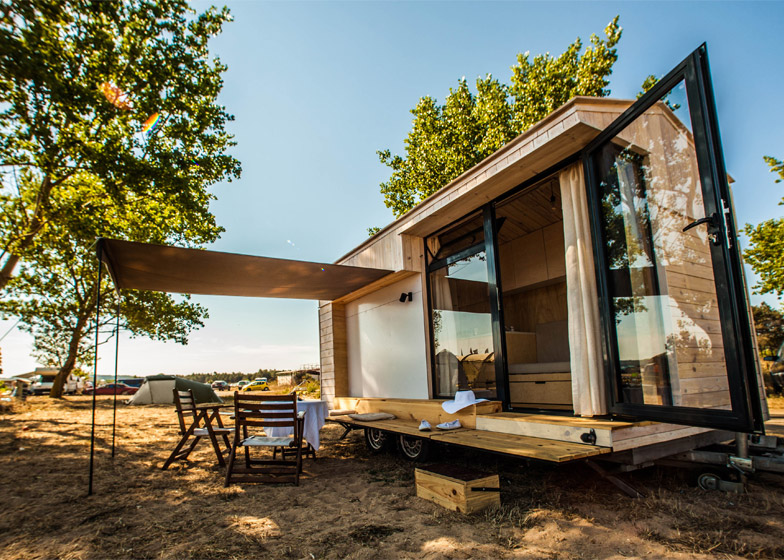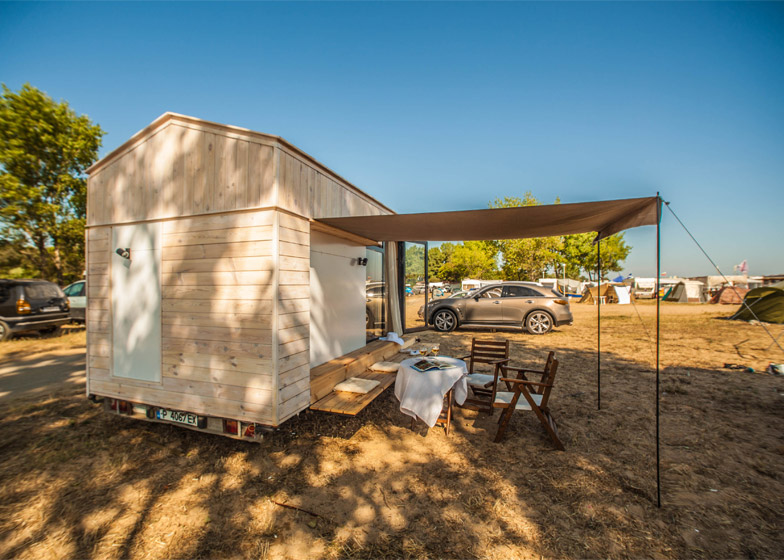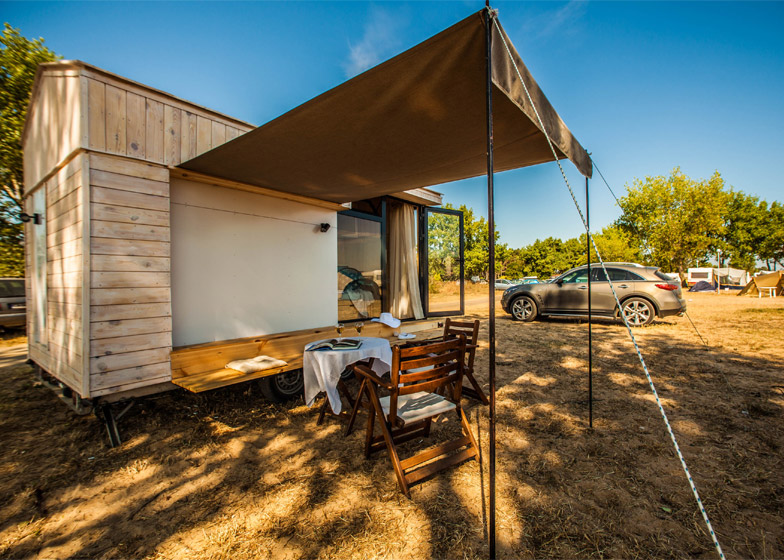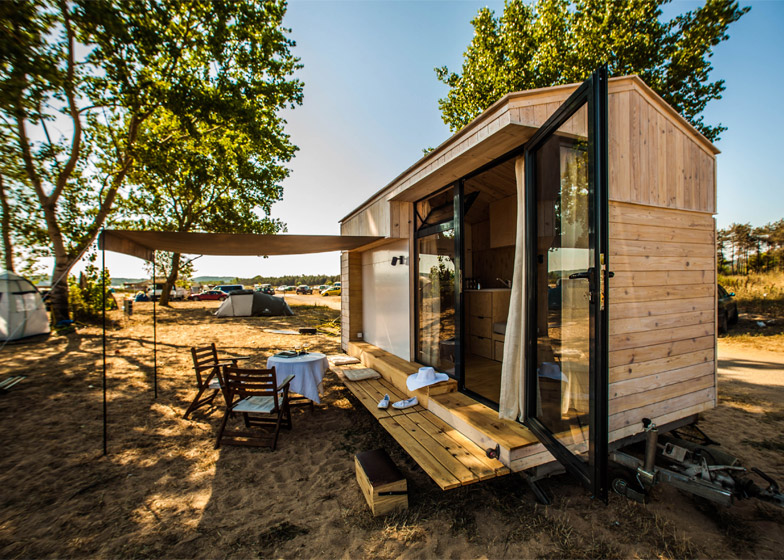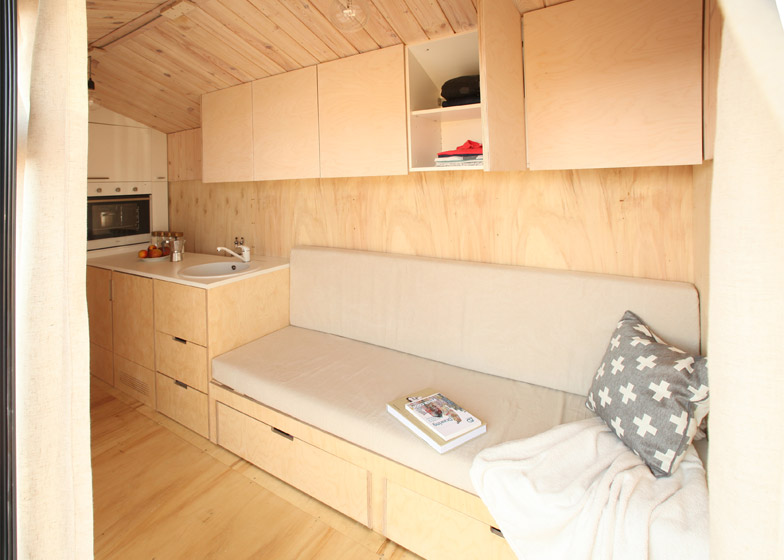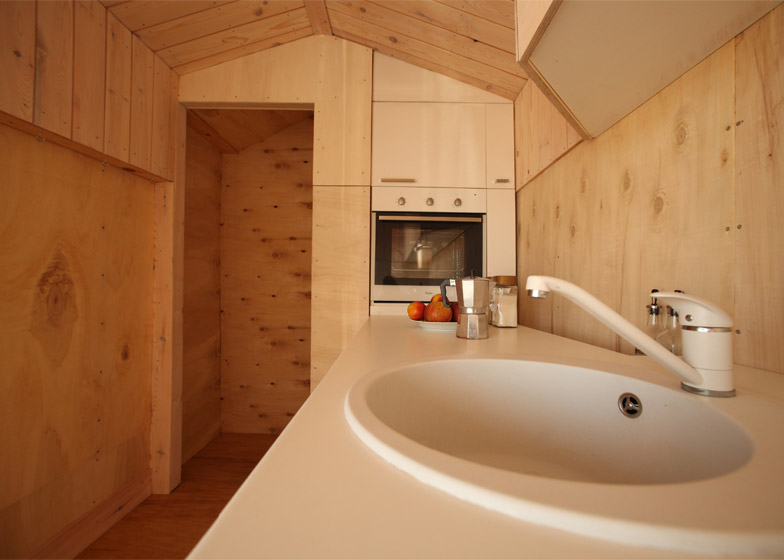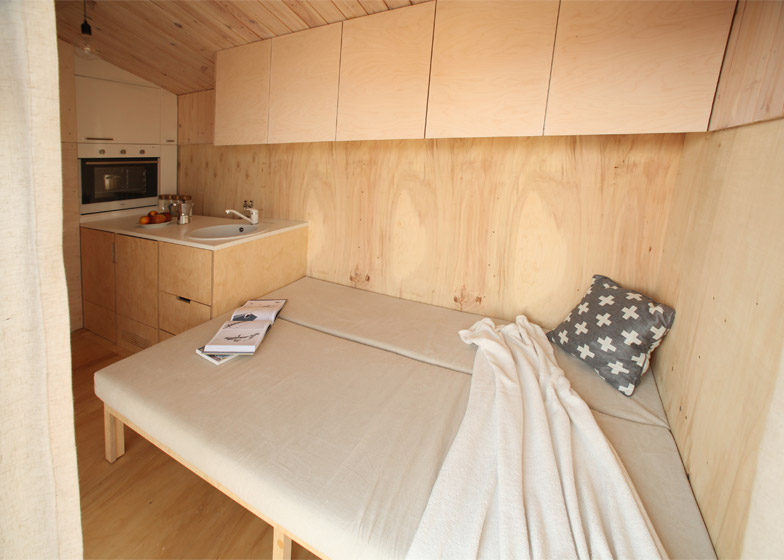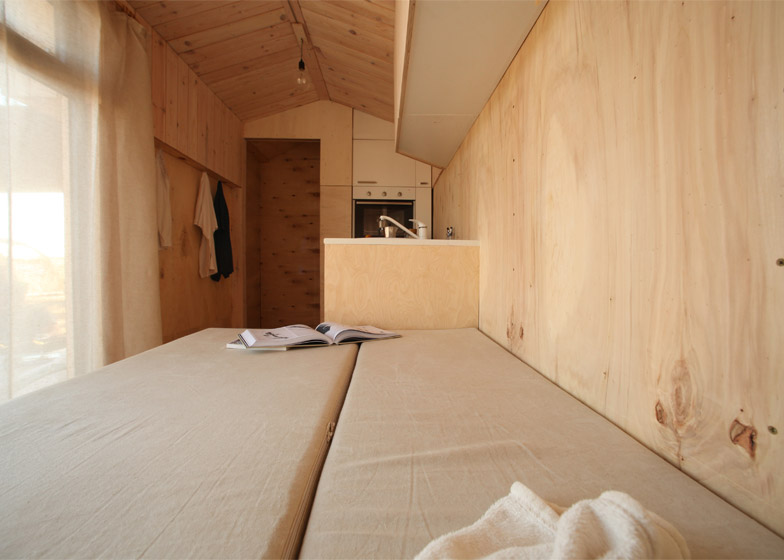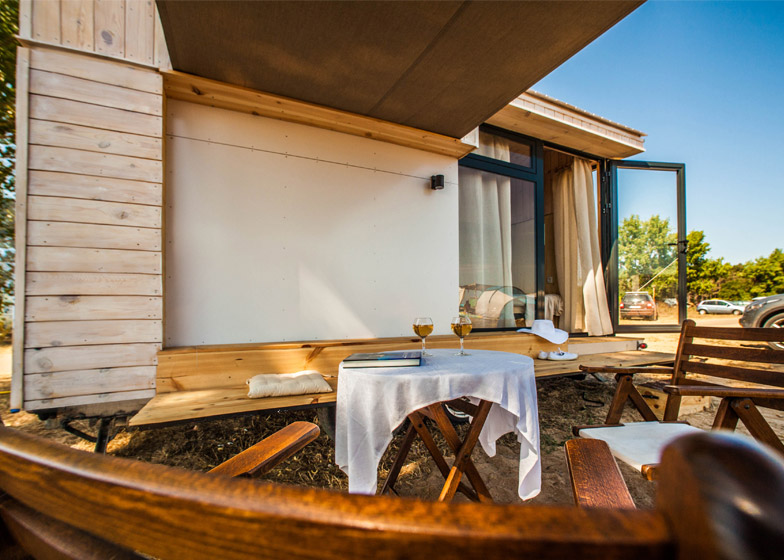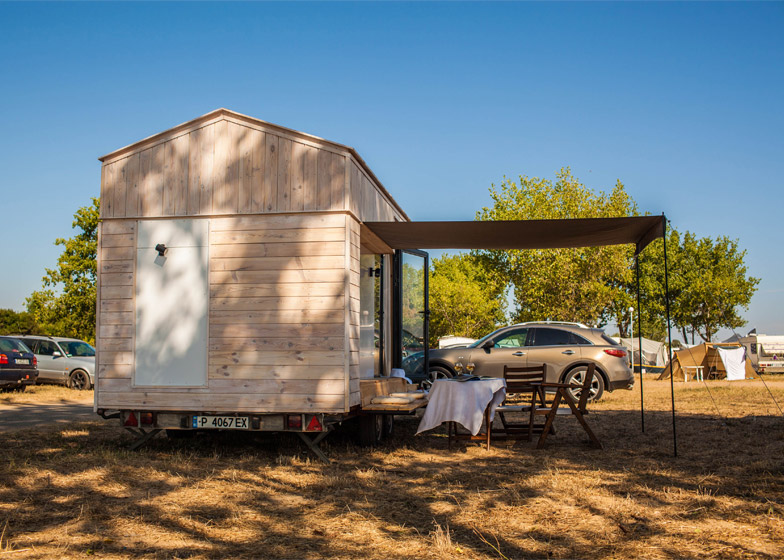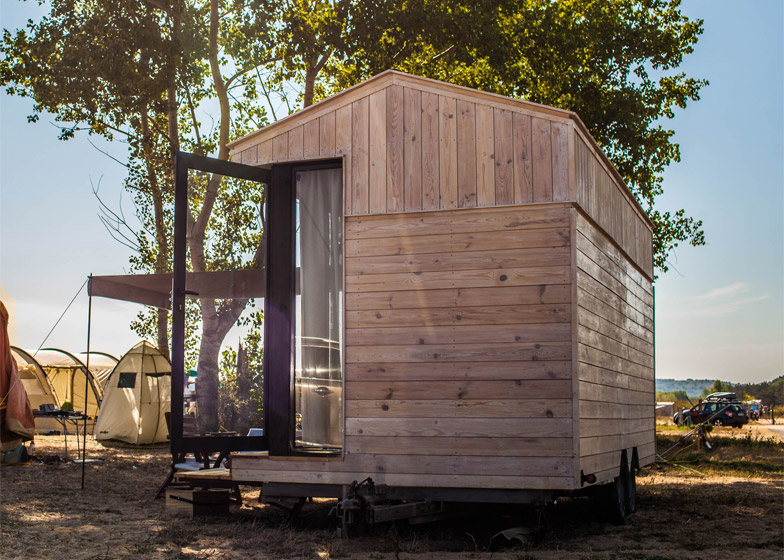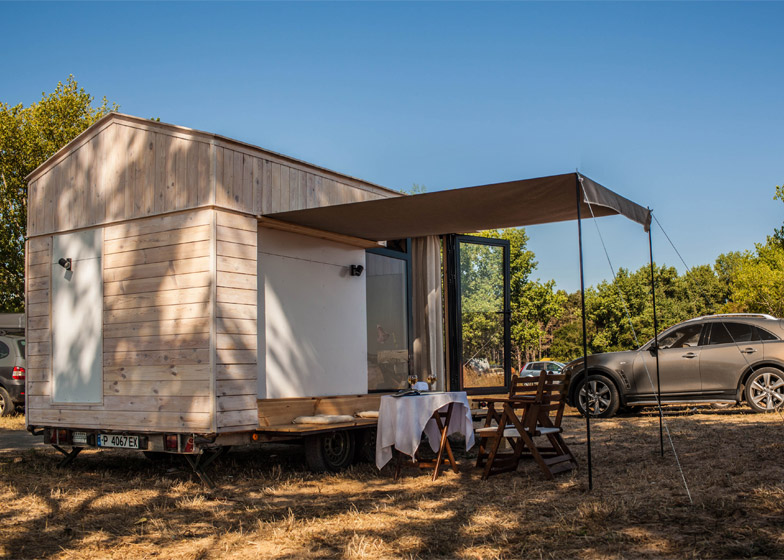Bulgarian architect Hristina Hristova has designed a tiny holiday home for herself and her husband that can be towed on a trailer so they can avoid the crowds along the country's built-up coast (+ slideshow).
The nine-square-metre mobile home was designed by Hristina Hristova as a more affordable and flexible alternative to a fixed holiday house. She named it Koleliba, an amalgamation of the Bulgarian words for hut and wheel, and spent €8,500 (approximately £6,240) building it.
"The idea was born out of our desire to stay away from the crowds and the concrete of the five-star beach resorts, and spend time somewhere calmer and closer to nature," said Hristova.
"Our limited budget as a young family kept the idea of buying a plot and building on it distant and impossible – and by doing so we were just going to be part of the concrete army invading the seaside – so we opted for making our retreat on wheels," she added.
The hut has an internal ceiling height of 2.4 metres, similar to the height of a standard room, and contains a sofa bed, a kitchen and a toilet at one end, which is separated by a plywood door added after the photographs were taken.
Full-height glazing was also added on one side to make the space feel bigger.
"The standard height of 2.4 metres as well as the substantial glazing make this tiny project feel more like a spacious house," said Hristova. "The light coming from the full-height windows allows the amazing sea views to become a dominant part of the interior."
Outside, a timber plank can be attached to the edge of the hut to create a bench, and a canvas tarpaulin can be rolled out from behind a panel at the side to create a canopy for outdoor dining.
"The main goal of this project was to make us spend more time outside and make up for the murky, rainy, winter days in the office, so we made the exterior a natural continuation of the interior," said Hristova.
"A big bench spanning across the main facade creates enough space for our dear friends when they visit, and under the canopy we can spend long afternoons drinking chilled wine."
Other portable homes completed in recent years include a prefabricated house in Spain that can be erected in just one day and a hut on an eroding stretch of New Zealand's coast, which is built on sleds so it can be towed away when the water rises.
Related story: our roundup of the 13 most unusual portable homes and hideaways
Koleliba was built with Bulgarian kiln-dried pine, which was treated with oil rather than lacquer to retain the look, feel and scent of bare timber.
"Unlike lacquer, which mainly aims to entirely seal the surface of the wood, the oil infiltrates the timber fibres, making them stronger and more resistant," explained Hristova. "This oil allows the timber to breathe and keep the smell of freshly cut wood."
The hut weighs two tonnes, and Hristova reduced the amount and size of timber used to make it as light as possible.
This is the first project she has designed and built on her own, and she has since had interest from others seeking a simpler way to explore Bulgaria's coast.
"After the fall of communism, the government was not dictating what could be built, so resorts that sprang up were overcrowded and looked like a big mass of concrete, with poor infrastructure between them, and bad traffic," she told Dezeen.
"This is our response to the invading consumerism that encourages us to always want our homes bigger, better and unnecessarily luxurious," she added.
"It's a step back to a simpler life without excesses but full of free time, happy moments and friends, which we often have to sacrifice in our never-ending drive for more."
Photography is by Deyan Tomov.



